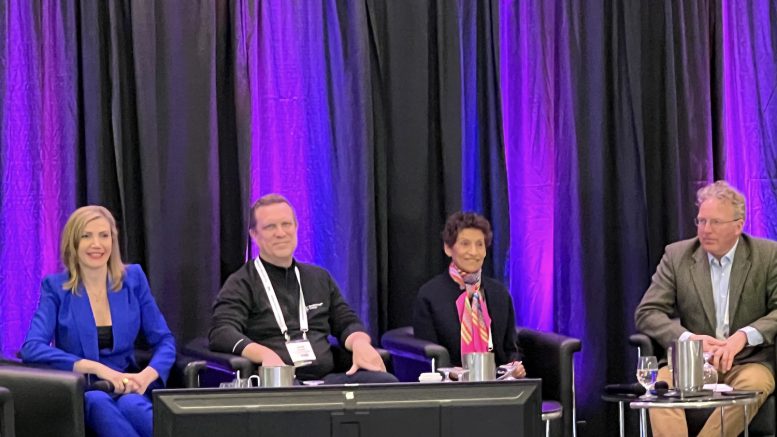In its quest for bonanza returns, high-tech capital is willing to take a bet on mining, an industry not noted for producing steady returns and challenged by its comparatively small size.
Silicon Valley capitalists and entrepreneurs are bringing fresh investment and talent to upstart mining companies, said panellists on Mar. 7 at the PDAC convention in Toronto.
A wave to the tune of US$10-US$15 billion of sophisticated funding had flown towards junior mining and innovation companies over the past three years, said David Danielson of Breakthrough Energy Ventures of California., a US$2-billion Bill Gates-backed climate and venture capital investment firm.
Climate tech venture capital has been one of the fastest-growing trends in venture capital over the last three years, Danielson said.
While he sees early signs of life in the roughly US$2 billion invested, his fund deploys a high-risk-to-reward strategy.
“If we take 30 companies where we can put US$30 million in each early, we’re winners if two or three of those turn into billion dollar returns for us,” he said.
Danielson is also an adjunct professor at Stanford University, where he teaches courses on energy venture development. He has also been the assistant secretary for the US Department of Energy’s Office of Energy Efficiency.
“Although Breakthrough Energy just got involved, there are early signs of life,” he told the panel. He said it takes about 10 years to know whether something’s gotten that ‘commercial traction.’
Regarding mining innovation, Breakthrough Energy has a strong interest in accelerating the process from mineral discovery to production.
“We bring a bunch of new technologies together and experts from the industry to increase the hit rate by five times on discoveries to get dramatically more of these metals online. We aim to find innovative ways to compress that development timescale,” Danielson said.
Meanwhile, BHP Xplor VP Sonia Scarcelli said she had noticed an uptick in talent transferring from Silicon Valley to Toronto’s Bay Street. She administers BHP’s (NYSE: BHP; LSE: BHP; ASX: BHP) junior accelerator program, which looks at companies at any stage along the value curve.
And for all the ostensibly high-tech end-uses of mining products, a fresh look by Silicon Valley talent is giving mining research and development a shot in the arm and finding new economic uses for metals.
“We invest in early-stage concepts and ideas to work on the very front end of the value chain of the resources,” Scarcelli says.
The accelerator program aims to get in early on exploration concepts and ideas globally, partnering with the companies and bringing its in-house know-how and new geological thinking. “We’re investing in commercializing these opportunities, looking at how we can accelerate the exploration phase. We can squeeze that – instead of five to 10 years – down to maybe a couple of years,” Scarcelli said.
Scarcelli herself has transferred from the oil and gas industry. “To have disruption, you have to have a disrupting idea, and I see talent from other industries coming to mining.”
Rethinking old problems
Rio Tinto (NYSE: RIO; LSE: RIO; ASX: RIO) is taking a fresh look at the perennial problem of tailings, Peter Harvey, the major’s managing director for closure and legacy management, said.
He sees the mine closure sector as a real opportunity for profit either via the remaining minerals in older tailings deposits or via the ecological and recreational value the rehabilitated lands hold.
“We look at what residual value exists in our portfolio, whether that’s minerals or metals, value in the land, in the water, the biodiversity, how do we leverage and access that and part of that residual value,” he said.
Harvey tapped the mining R&D space as being able to “really move the needle forward.”
Meanwhile, Doris Hiam-Galvez, a senior advisor at consulting engineering services firm Hatch, and also a PDAC board member, said that applying the concept of ‘designing sustainable prosperity’ is a method that enables the creation of a future sustainable society. It represents a practical and structured process where the key parties collaborate to design their future so that they have a life after mining has ended.
“The future is all about change. We must be ready and adapt to that change,” said Hiam-Galvez.
“But I think we are all aligned in what we must do. We talk so much, but I think it’s time for action. And we will see more action because we have no choice. Adopting new technologies faster will reduce that time to de-risk mining investments,” she said.



Be the first to comment on "High-tech capital takes a bet on mining innovators"